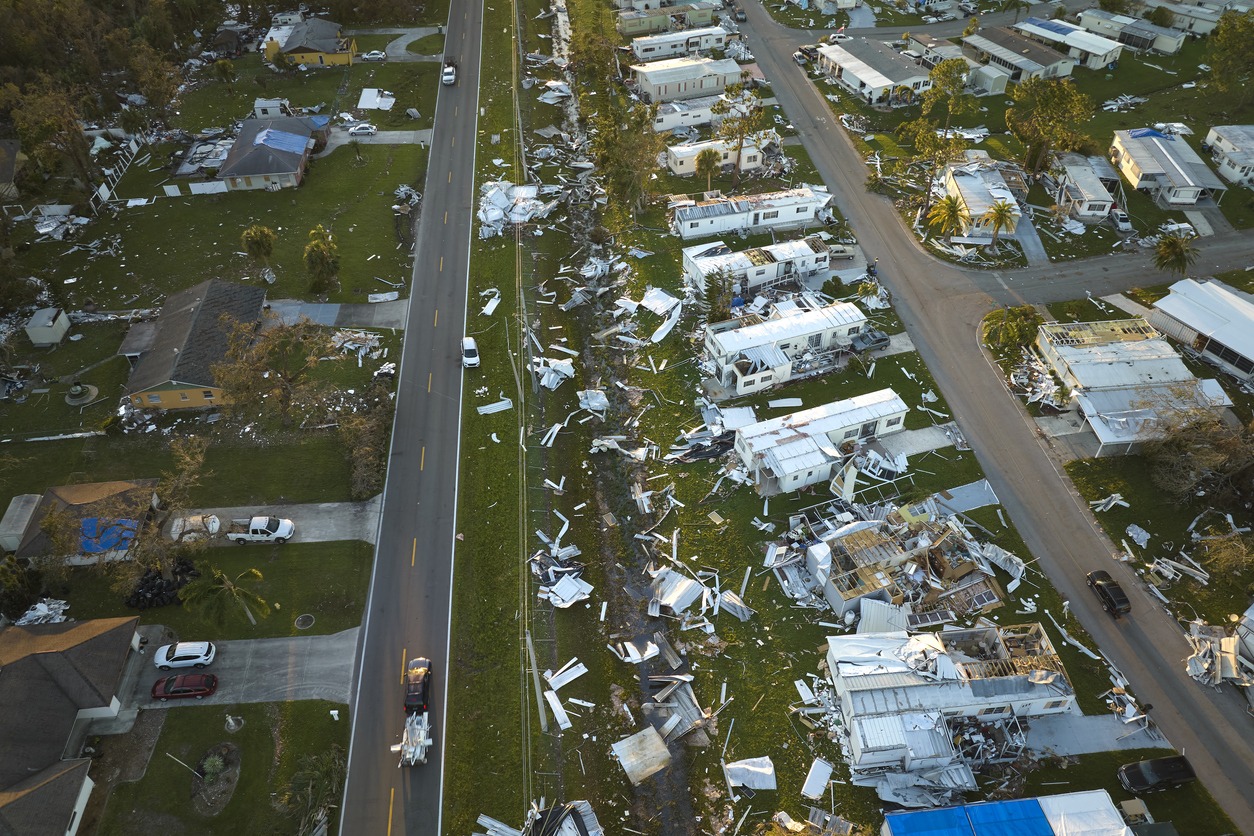Houston is a city of relentless drive, but it also faces ever-present weather threats. Success in Houston today isn't just earned; it must be fiercely fought for.
Businesses dedicate years to building their reputation and fortifying their balance sheets, becoming true cornerstones of the local economy. Yet, a year after Hurricane Beryl tore through on July 8, 2024, plunging more than 2.7 million homes and businesses into darkness, we're starkly reminded of how fragile prosperity can be. With recent, deadly flash flooding in Central Texas in early July 2025, claiming at least 135 lives in the Texas Hill Country, this isn't some distant what if; it's a constant, unsettling reality.
When a catastrophic storm slams into land, it doesn't just shatter windows or flood warehouses. It unleashes a financial deluge. The real damage isn't measured in debris, but in the pervasive red ink drowning a balance sheet. This financial crisis can pull a healthy enterprise into insolvency before the storm clouds have fully cleared.
The Financial Freefall: What Happens the Moment a Storm Hits?
Financial devastation kicks in the second the business's doors close, often long before an insurance adjuster arrives. Those immediate, cascading losses? They're dangerously underestimated. For many businesses, this initial shock is the hardest to survive because it attacks a company's very pulse: its cash flow. Even a brief, unexpected interruption can rapidly exhaust working capital, leaving you unable to cover basic bills.
Beyond Damaged Property: The True Cost of Business Interruption
The real gut-punch from a storm is the instant, total halt of revenue-generating operations. Imagine a Houston manufacturing firm with a healthy $5 million annual revenue. The moment it shuts down due to a hurricane, it starts losing approximately $13,698.63 in sales daily. That gaping hole in income? It's just the first domino in a financial disaster.
Revenue vanishes, but here's the kicker: many of the company's expenses don't. This creates a robust, inescapable financial vise. Uninsured or underinsured losses quickly compound, turning a temporary shutdown into a desperate fight for survival. These enduring costs highlight the actual, immediate impact of business interruption:
- Lost Revenue & Gross Profit: Income disappears while doors are closed, creating a huge budget hole that impacts not just sales but also profit margins.
- Fixed Operating Costs: These expenses relentlessly drain funds, covering salaries for essential employees, rent, loan payments, and recurring software subscriptions—all due whether you're open or not.
- Extra Expenses: Unexpected costs incurred to mitigate the shutdown or get back online fast. Think about renting temporary facilities, emergency equipment, or expedited shipping.
- Supply Chain Collapse: Inability to receive materials or ship products cripples your model, leading to costly contractual penalties, frustrated suppliers, and, critically, lost customer trust. This can extend to Contingent Business Interruption (CBI) losses, hitting your revenue when a covered peril damages a key customer or supplier. Such business interruption losses may typically be covered by insurance.
- Reputational Damage & Market Share Erosion: Loyal clients forced to find new suppliers during downtime may never return. This long-term damage to your brand and competitive edge can linger for years.
The Peril of Power Outages
A widespread power outage can keep a company shut down for weeks, even if a building stands tall with minimal damage. Following Hurricane Beryl in July 2024, energy companies faced intense public criticism for slow restoration, a stark reminder of how vulnerable businesses are. An intact facility, bleeding cash daily, simply can't operate.
Significant investments are underway to enhance the Greater Houston power grid's resilience against extreme weather. While these efforts are crucial, they don't erase the risk. If you rely on electricity (and who doesn't these days?), a prolonged outage remains a potent, crippling threat. Businesses must consider robust backup power solutions or comprehensive operational continuity plans.
The Insurance Minefield: Why Your Policy Isn't a Golden Ticket
For many business owners, that insurance policy feels like a rock-solid promise of recovery. But often, the claims process turns into a second disaster, marked by frustrating delays, contentious disputes, and outright denials, pushing a company closer to the brink. That perceived safety net? It's often riddled with holes.
- Policy Exclusions: Standard commercial policies, like flood, often leave out critical perils. Businesses in flood-prone areas like Houston must secure separate flood insurance policies, typically through the National Flood Insurance Program (NFIP) or private insurers, to cover external water damage.
- Peril Specificity: Business interruption coverage usually requires direct loss or physical damage from a covered peril to kick in.
A Battle of Fine Print: Landlord vs. Tenant Coverage
One of the trickiest areas in commercial property storm damage? The murky waters of commercial leases. Who pays for what—landlord's policy or tenant's? These widespread disputes can halt repairs indefinitely, turning into a costly battle of fine print while your business remains closed.
Understanding the typical division of responsibility, as spelled out in your lease, is critical for both property owners and tenants:
- Landlord's Coverage (Master Policy): Usually covers the building's shell, structure, roof, and common areas.
- Tenant's Coverage: Generally covers interior finishes, fixtures, equipment, and inventory owned by the tenant. Business interruption coverage is typically the tenant's responsibility.
- Lease Clauses: Key clauses like Rent and Escalation, Maintenance and Repair Obligations, Indemnification and Insurance Requirements, and Force Majeure define each party's duties. Periodically reviewing and updating these provisions is essential.
When Insurance Fails: The Legal Lifeline
Insurers are businesses, plain and simple, and they often employ tactics to minimize payouts. That might mean blaming pre-existing damage, offering inadequate lowball settlements, or creating frustrating delays. These bad faith tactics aren't just unfair but illegal under state insurance codes. For instance, Chapter 541 (referring to Unfair Methods of Competition and outlining Unfair or Deceptive Acts or Practices) and Chapter 542 (Prompt Payment of Claims) of the Texas Insurance Code protect policyholders from unfair practices and mandate timely claim handling.
In storm-battered Houston, navigating a complex commercial claim alone is almost impossible. The disputes outlined above—over build-outs, repair responsibility, lost business, and insurer tactics—can stall recovery for months, relentlessly bleeding a company dry. That's precisely where a dedicated Houston property damage lawyer becomes a company's most valuable asset.
For instance, law firms like JCE Law Group represent businesses against insurance carriers in complex property damage claims throughout Texas. Their expertise encompasses navigating intricate policy language, challenging bad faith practices, and securing fair settlements for clients facing storm-related losses, ensuring companies can effectively rebuild.
These legal professionals understand insurance carriers' specific tactics in Texas and strategically counter bad faith practices. They handle everything from structural damage to business interruption and disputes over who insures what. For a business on the brink, a legal advocate fighting for a fair and timely settlement can be the difference between rebuilding and bankruptcy.
The Long-Term Shockwave: Rebuilding and Devaluation
Even if you survive the initial shutdown and the insurance battle, the financial hangover lingers long after the debris is gone. The road to recovery? It has immense costs and risks that can permanently reshape your company's future and financial health.
The Staggering Cost of Rebuilding
Returning to business isn't just about repairs; it's a complete, costly operational reset. The capital needed is often immense, far beyond what most expect. A commercial refit means replacing assets at current, usually inflated, market costs.
Think of structural rebuilding that costs hundreds of thousands, if not millions, of specialized equipment with agonizingly long lead times, and a massive cash outlay to restock inventory before your first new sale. And don't forget meeting newer, more expensive building codes. Meanwhile, federal aid offers critical relief, such as FEMA's Individual and Public Assistance programs following major disaster declarations (e.g., recent Texas declarations in March and July 2025). However, it's often limited and rarely makes a business whole. SBA disaster loans are another avenue, but they represent debt that must be repaid.
Erasing Net Worth: The Impact on Valuation
Here's the final, devastating punch explaining how a storm erases net worth. Massive, sudden liabilities from unfunded rebuilding, coupled with zero revenue, can make the company's liabilities swamp its assets overnight. It becomes technically insolvent. That immediately crushes creditworthiness, making those vital recovery loans nearly impossible.
The company's valuation plummets for investors, lenders, and potential buyers. What about future earnings potential? Permanently clouded by financial damage and heightened risk, wiping out years of hard-earned value.
Your Financial Fortress: Beyond the Next Storm
The ultimate lesson from a catastrophic storm is that the real threat is financial, not just physical. A business can be structurally sound yet financially destroyed by cascading operational losses, protracted insurance battles, and overwhelming rebuilding costs. True disaster preparedness isn't just about boarding up windows; it's about forging a financial fortress that can weather the economic storm that follows the literal one.
This means robust, appropriate insurance; crystal-clear lease agreements that nail down responsibilities before disaster strikes; and solid relationships with legal and financial experts. In a time of increasingly intense and frequent weather events, your company's long-term survival hinges less on the strength of its walls and far more on the resilience of its balance sheet.















